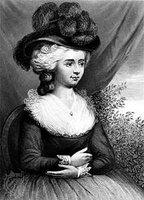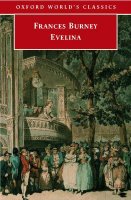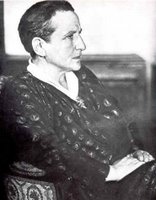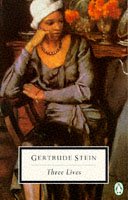

Analysis of
Euripides' Medea
and
Sophocles'
Oedipus Rex
Greek tragedies are some of the most compelling and interesting works of literature. The plot usually follows a common patten in which a heroic lead meets an unhappy or catastrophic end. This end is usually brought about by some fatal flaw of character, circumstances beyond his or her control, or by sheer destiny. In Medea, a tragedy written by Euripides, the focus is on conflict in human spirit between Medea’s love for her children and the desire for revenge. The story of Oedipus Rex, written by Sophocles, is very different and more complex. He uses dramatic irony and close comparison to make the audience think and to try to figure out the meanings behind the words. By closely analyzing the plays of Medea and Oedipus Rex one can see that Oedipus Rex is the better of the these two Greek tragedies.
According to Aristotle, “Tragedy is a representation of an action that is worth serious attention, complete in itself, and of some amplitude: in language enriched by a variety of artistic devices appropriate to the several parts of the play; presented in the form of action, not narration; by means of pity and fear bringing about the purgation of such emotions.” Three parts of the play that Aristotle was referring to are the plot, character, and thought.
The plot is the most important aspect of the tragedy. Aristotle tells us that a plot is a representation of an action and must be presented as a unified whole. The plot of Oedipus Rex has a beginning, middle and an end. One thing always follows something else as a “necessary or as a usual consequence, and is itself not followed by anything.” (Aristotle) According to E.M. Forester, “The plot is a narrative of events, the emphasis falling on causality.” The plot that contains an element of mystery is “capable of high development.” (Forester) In the play Medea, the reader can see the possible outcome of the tragedy in the very beginning. There is not much higher development in this play.
In the beginning, the nurse of Medea’s children is afraid that Medea may harm them in some way after Medea is abandoned and betrayed by her husband, Jason. Medea is driven by grief and despair, and although we do feel her grief and sense of loss, she remains basically the same throughout the play. She is obsessed with grief and the need for revenge. She does struggle with her feelings of her children when it comes time for her to kill them. The character of Medea is predictable and leaves no element of surprise, which makes her more of a flat character. Oedipus is also predictable in many ways. He is impulsive and often reacts before he thinks. On the other hand, his feelings and moods change throughout the play. His life is turned upside-down and he ends up losing all in the end. These changes in Oedipus, along with his final realizations, makes him a round character.
The endings of each play ties in with their beginnings, but Oedipus Rex takes a more creative and interesting path to reach the conclusion. Clues are presented throughout the tragedy to build suspense in a creative and artistic way. There is a mystery to be solved in Oedipus Rex. As the play progresses, facts and information continue to grow as the audience tries to predict the outcome in their minds. The choruses in between scenes give the audience time to calm down and think about what may happen next. One has time to contemplate what will happen in the end. As Oedipus determines to solve the mystery of who he really is and vows to punish the murderer of the king, he says, “Whoever he was that killed the king may readily wish to dispatch me with is murderous hand.” This will be a terrible irony, which the play later reveals. The denouement is the outcome, solution, unraveling, or clarification of a plot in a drama, story, etc. Edgar Allan Poe tells us, “It is only with the denouement constantly in view that we can give a plot its indispensable air of consequence or causation, by making the incidents, and especially the tone at all points, tend to the development of the intention.” Oedipus Rex is written with this kind of unraveling and clarification. The audience sees the causes and effects more clearly as the play progresses.
In the beginning of Oedipus Rex, the blind Prophet, Tiresias, knows but cannot see, and Oedipus sees but does not know. Tiresias says “You live together with those nearest you, / And see not in what evil plight you stand.” Eventually, after several events unfold, Oedipus finally realizes the situation he is in. After the death of his adoptive father Polypus, he understands that he has killed Lairus, and that Lairus is his father. When Jocasta finds that she has been married to her son, she hangs herself. Oedipus finds her dead and is consumed with humiliation and guilt over what he had done by marrying his own mother and having children with her. He gouges out his eyes with the pins from her dress. He does this so that his eyes may never see the crime he has committed, but nothing can change his knowledge of what he has done. Oedipus finally “sees” the truth of who he is, and the meaning when the Prophet Tiresias said, “Also to his own sons he shall be found/ Related as a brother, through sire, / And of woman from whose womb he came / Both son and spouse; one that has raised up seed / To his own father, and has murdered him. / Now get you in and ponder what I say. . .then say that I am no true seer.” The denouement in Oedipus Rex is the proving of the truth of the god’s oracles. This tragedy was brought about by Oedipus’ own flaws in character and also from a destiny of which he was unable to escape.
By analyzing the plots, characters and connected wholeness of the tragedies of Medea and Oedipus Rex, it can be determined that Oedipus Rex is the better of the two plays. As Wolfgang Clemen tells us, “Insignificant touches which seemed insignificant when they were introduced for the first time, acquire real meaning with the progress of events. In a truly great drama nothing is left disconnected; everything is carried on.” The denouement is constantly in view, and climax of Oedipus Rex does not come suddenly. It is unraveled as “we ourselves have gone the whole way and have followed the separate threads which lead up to the climax.”




















